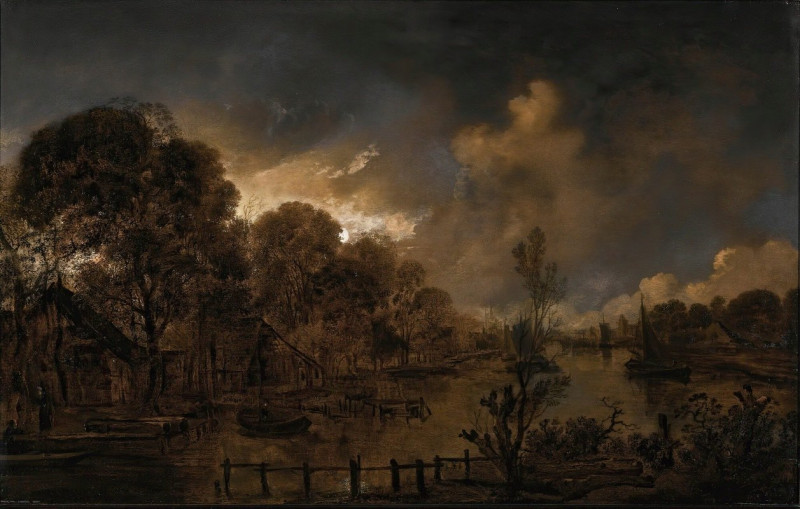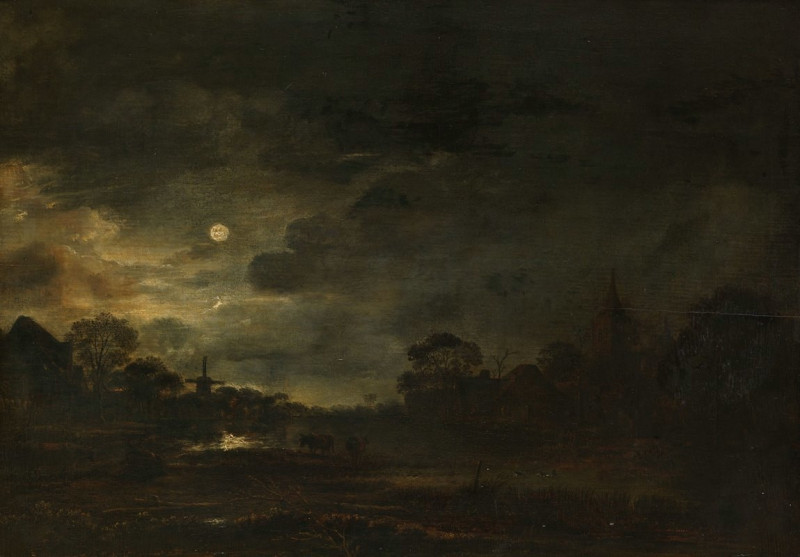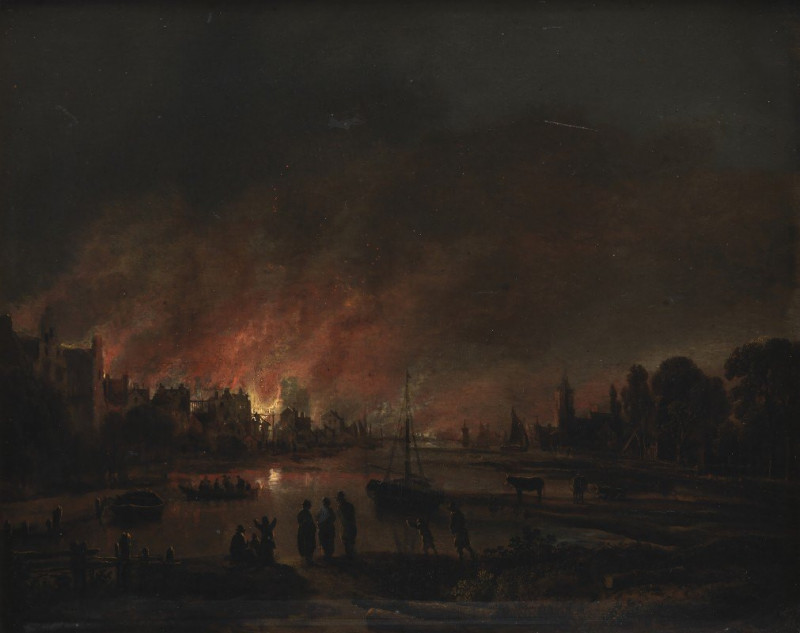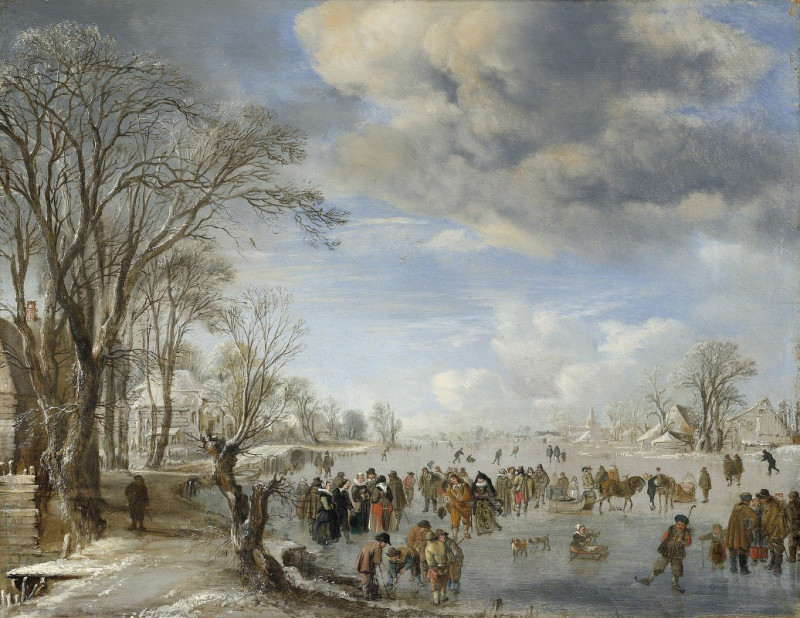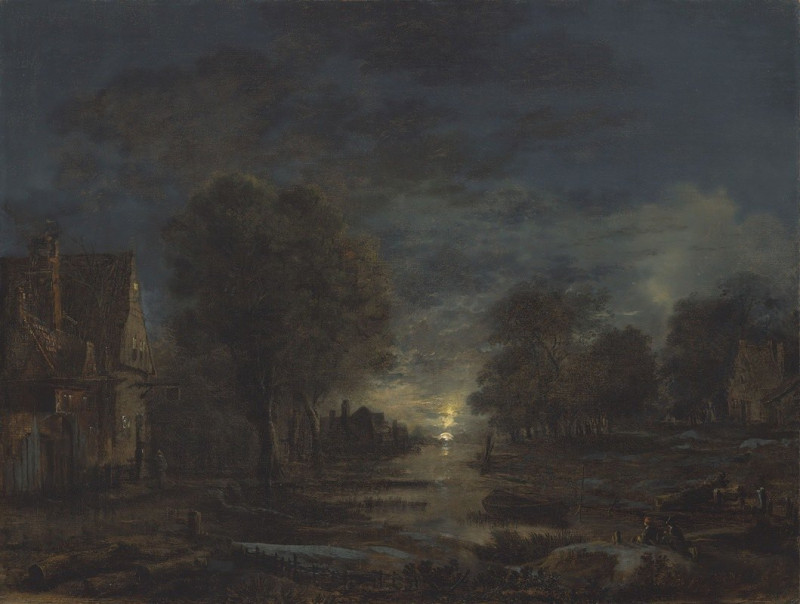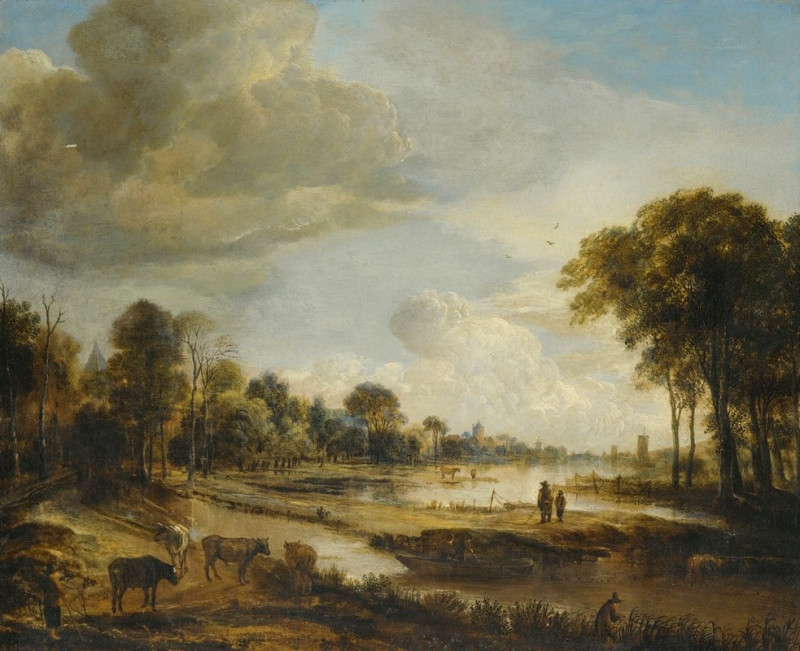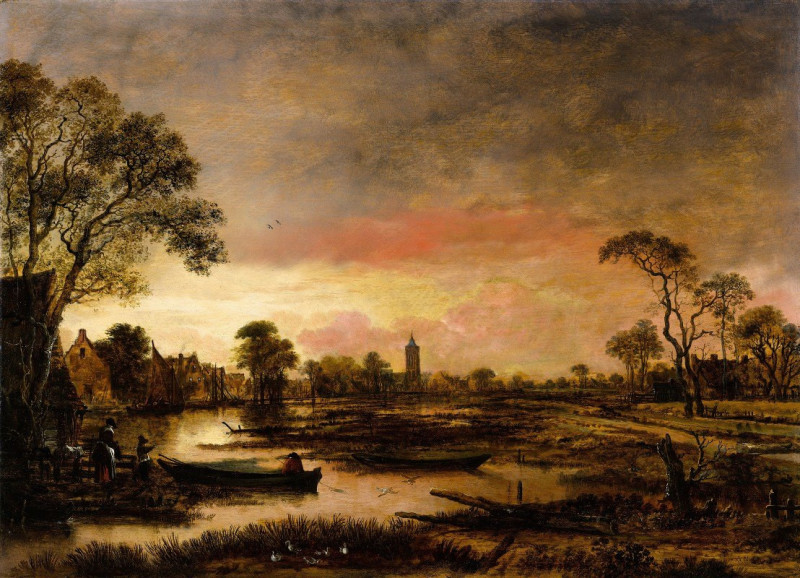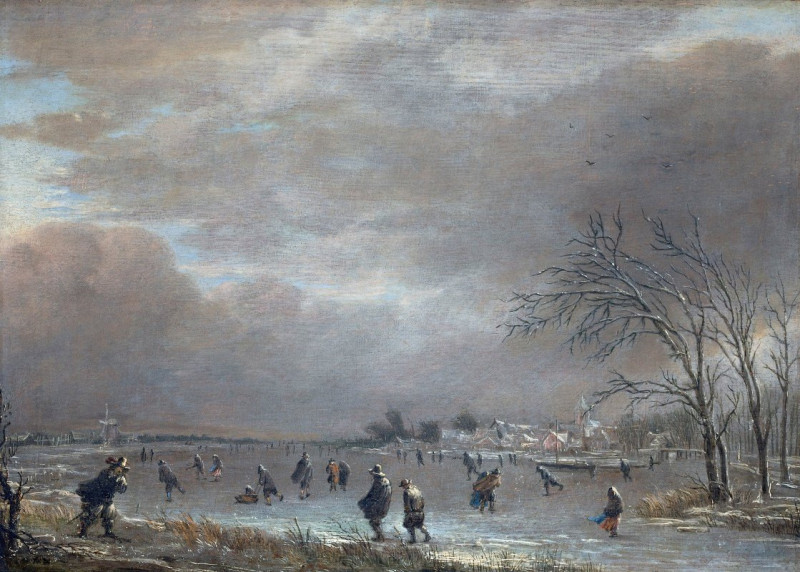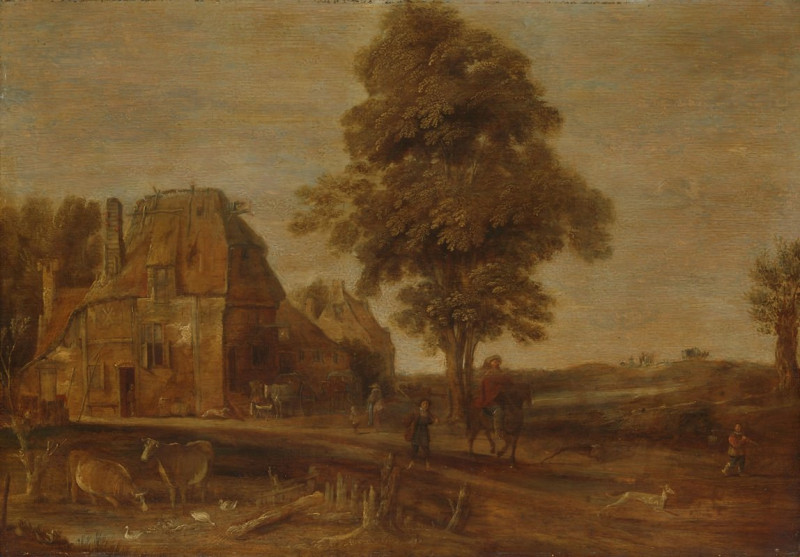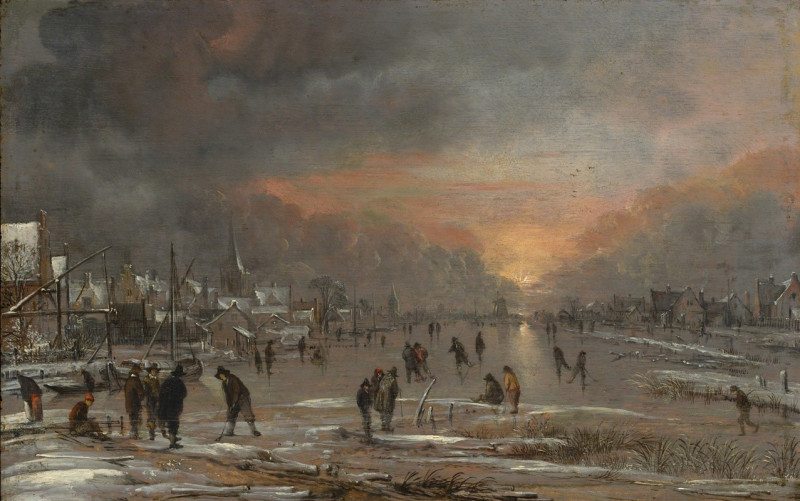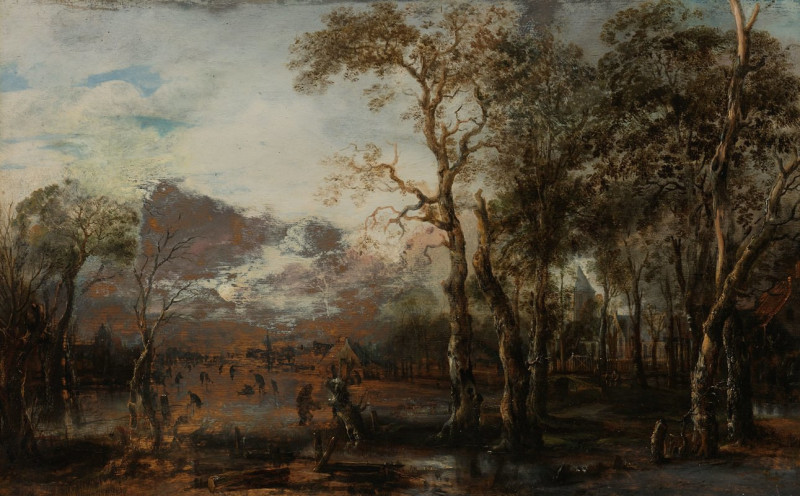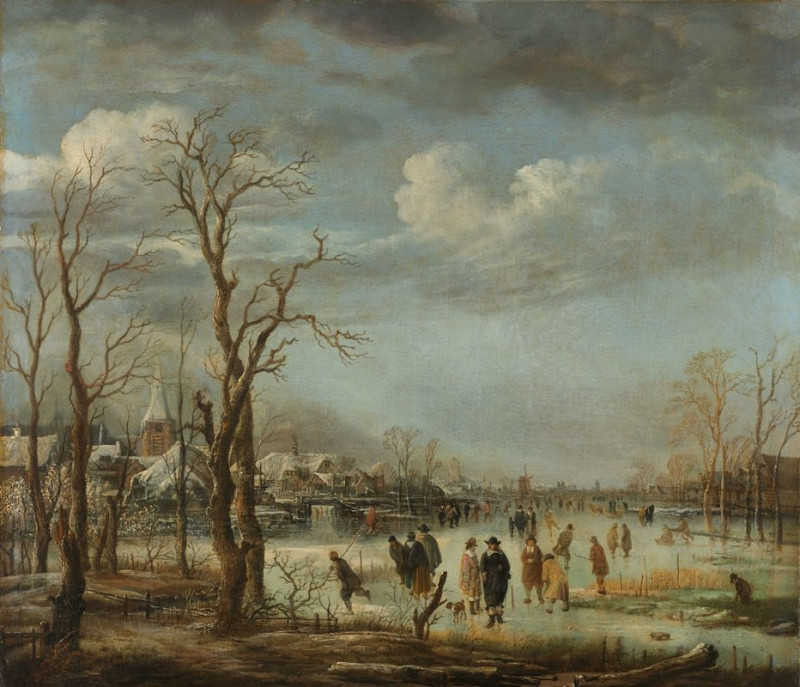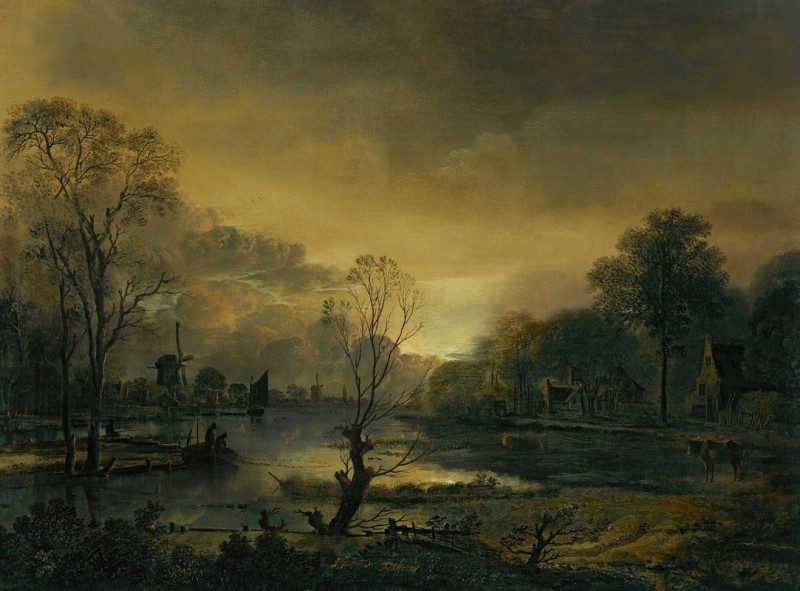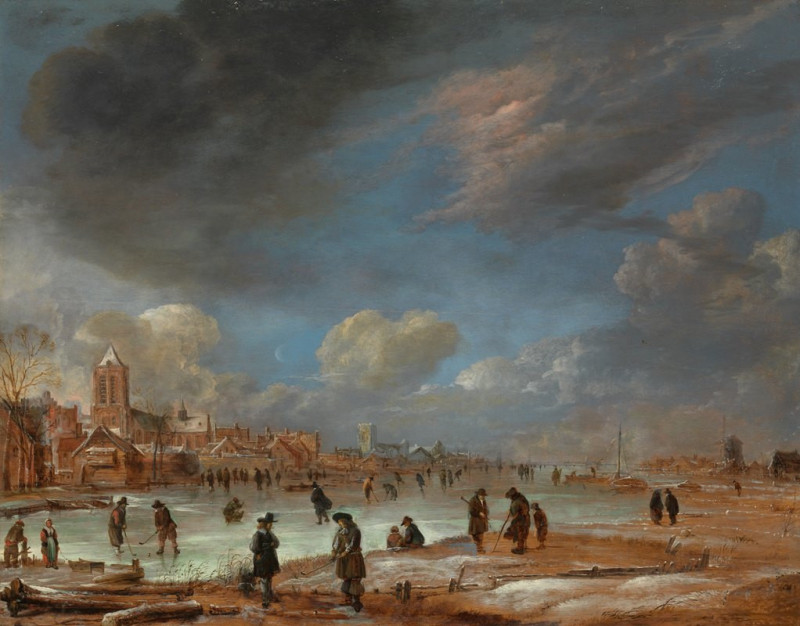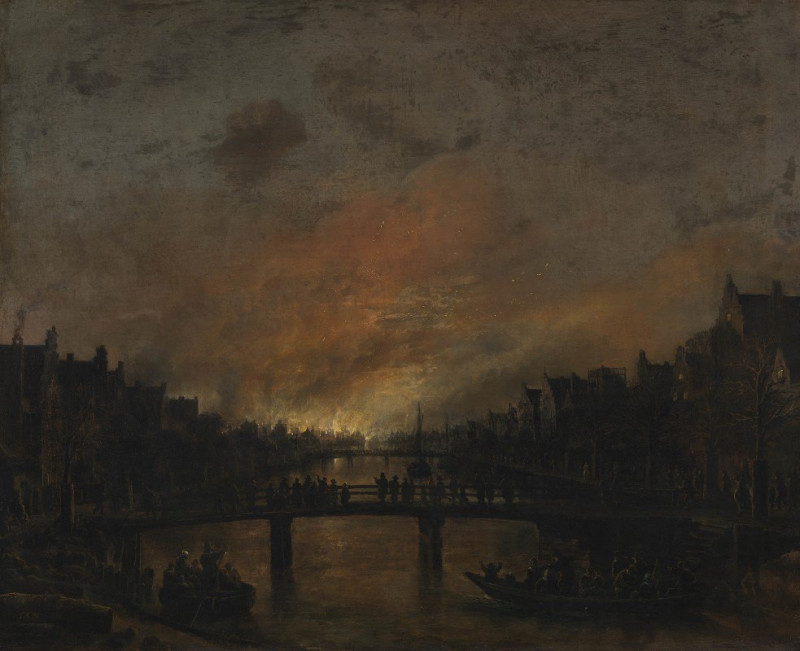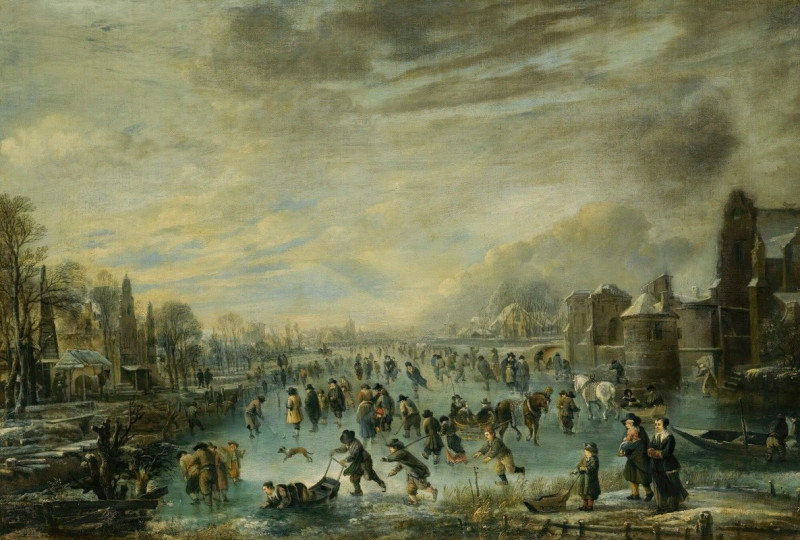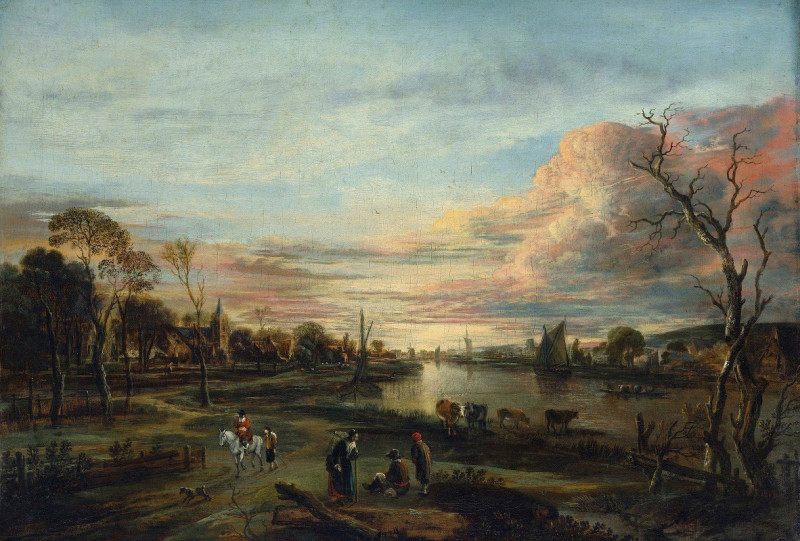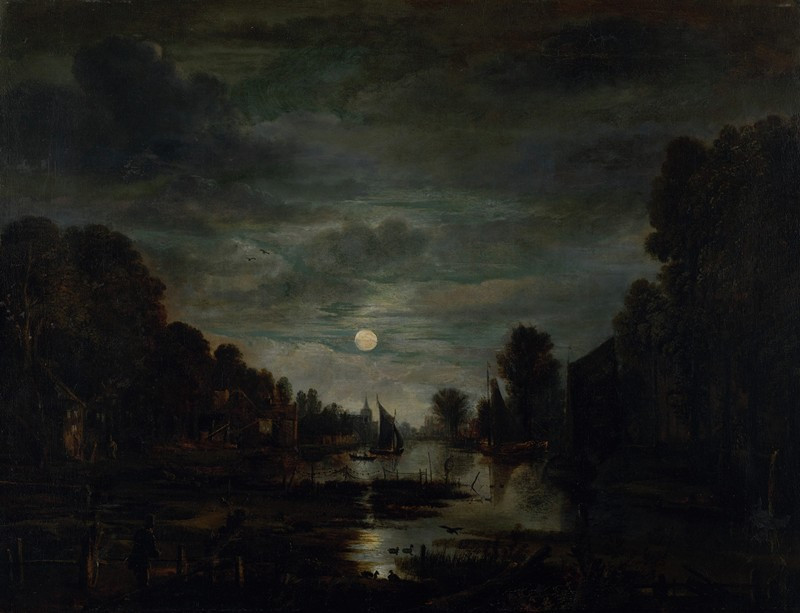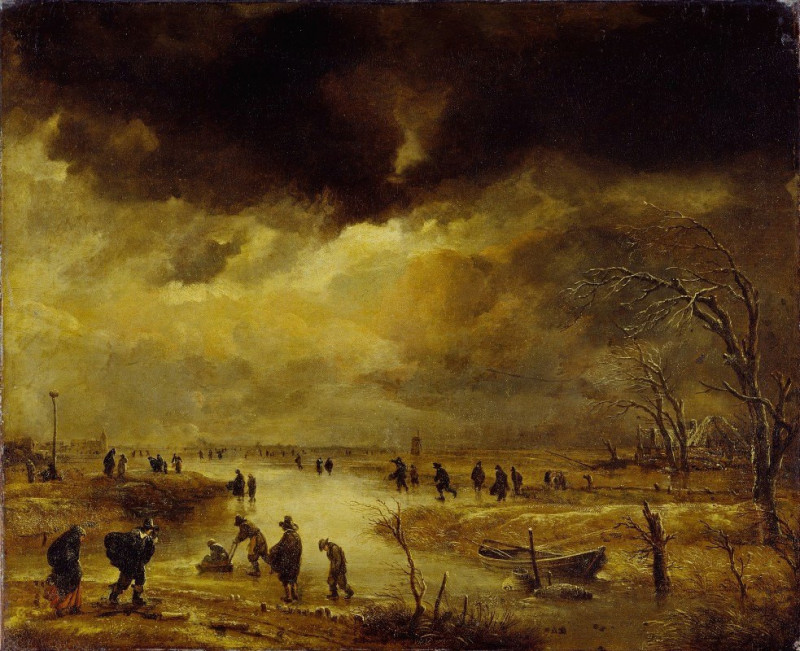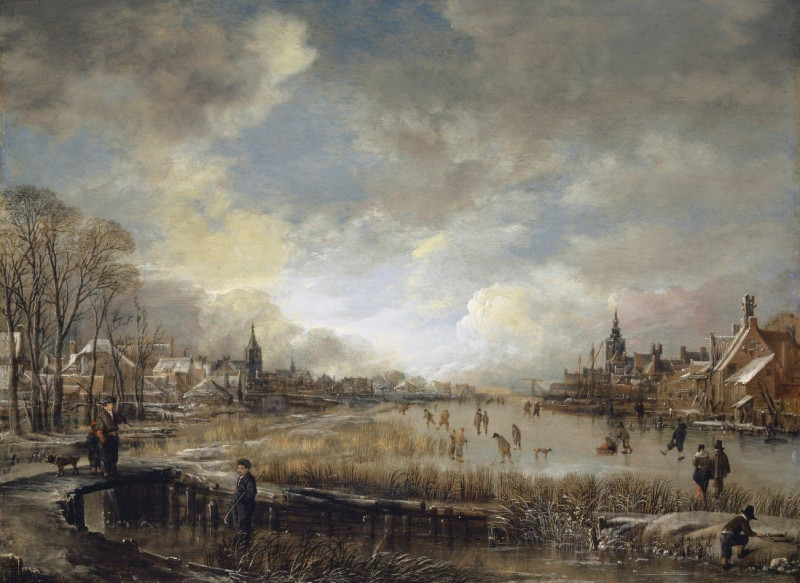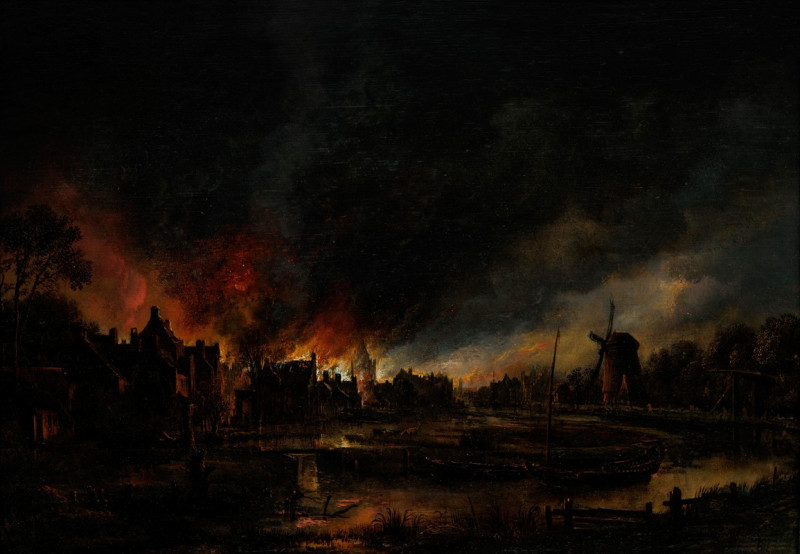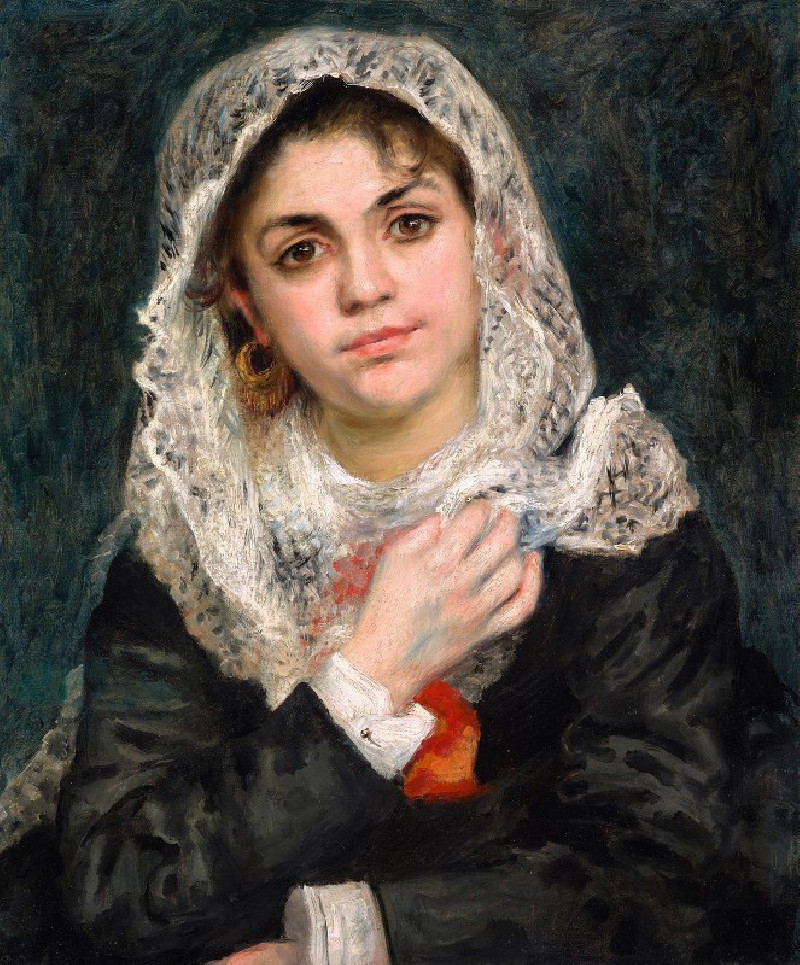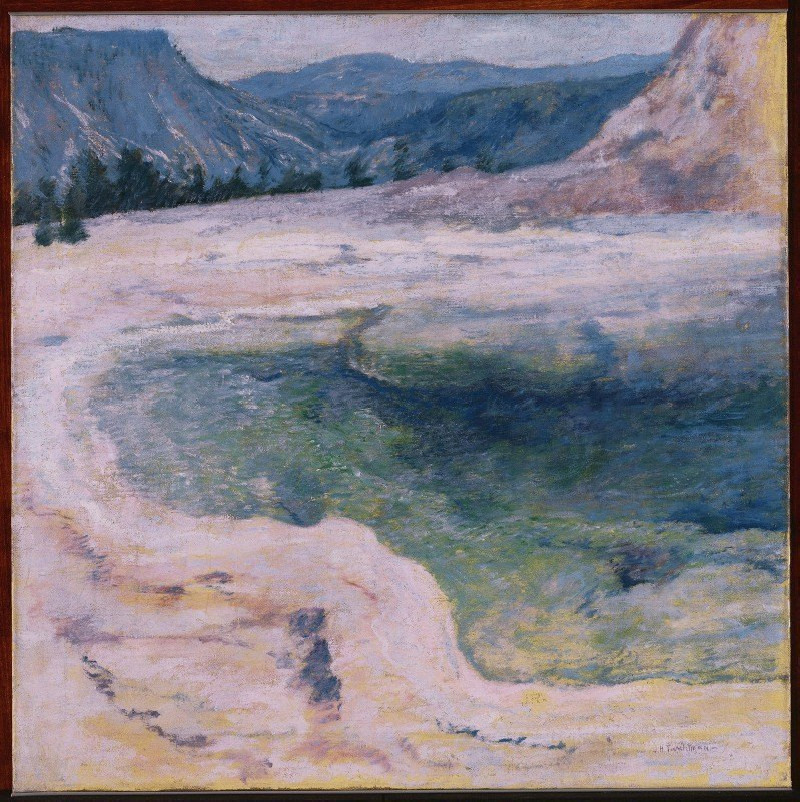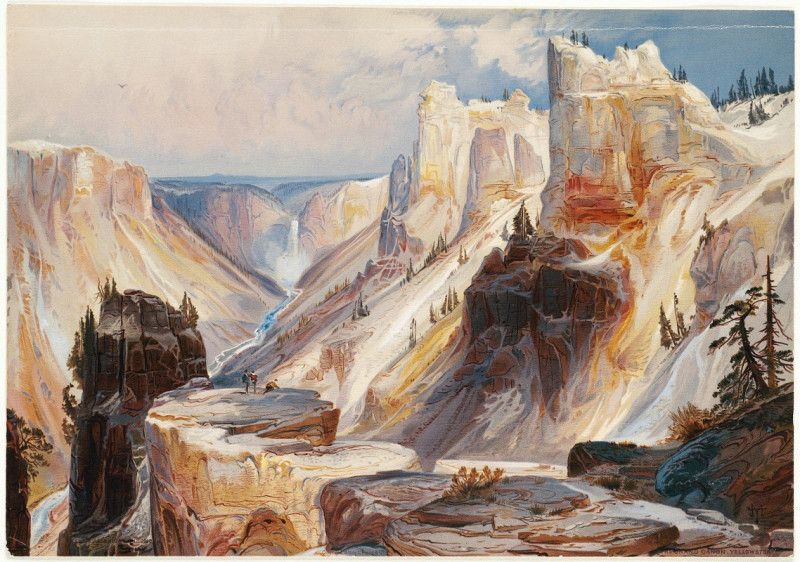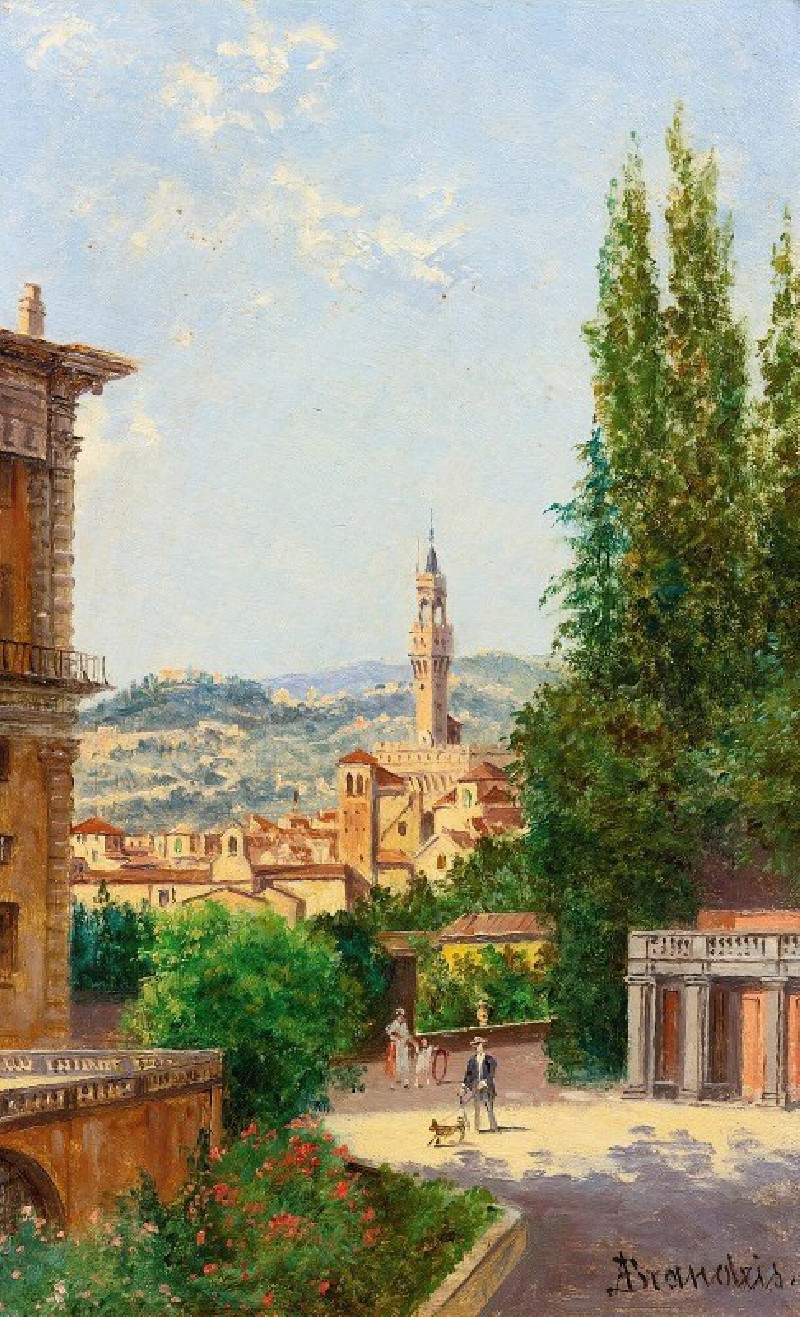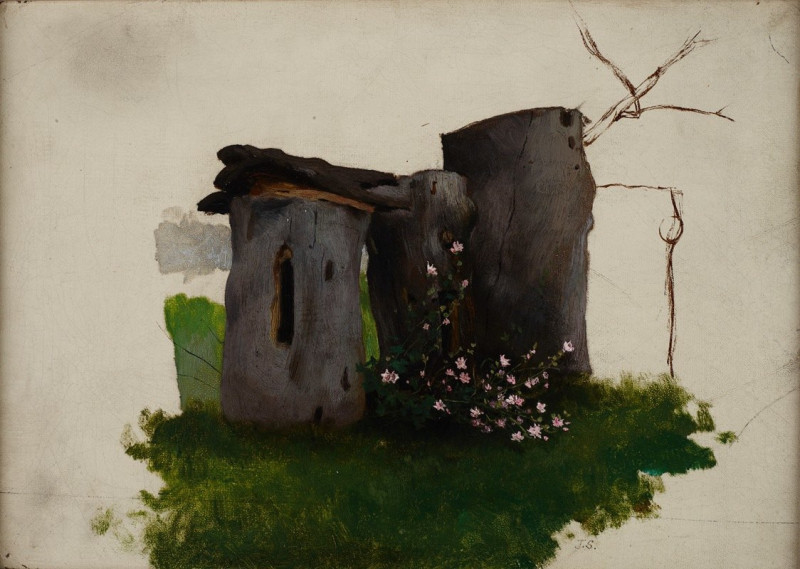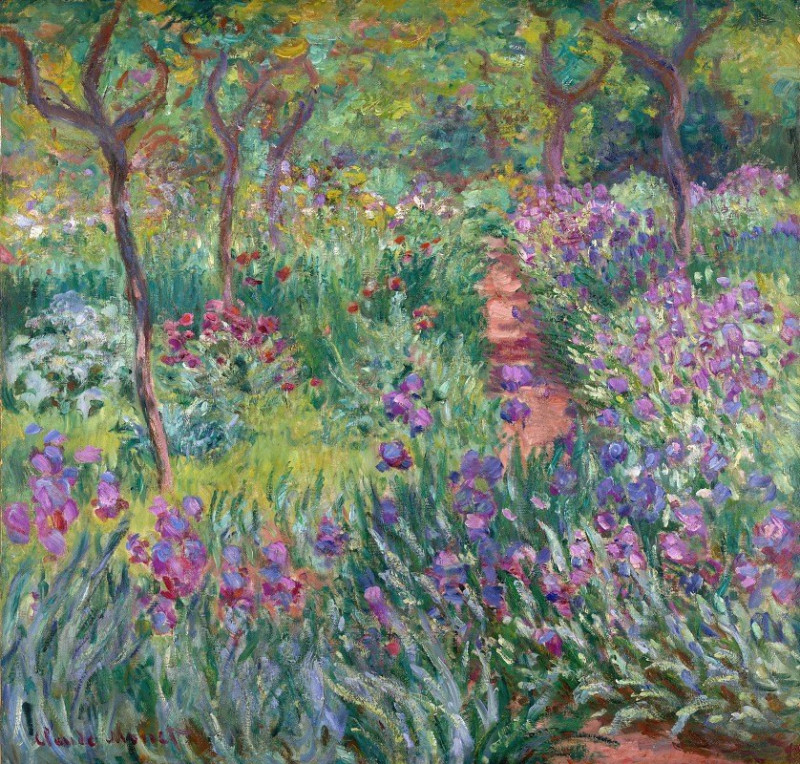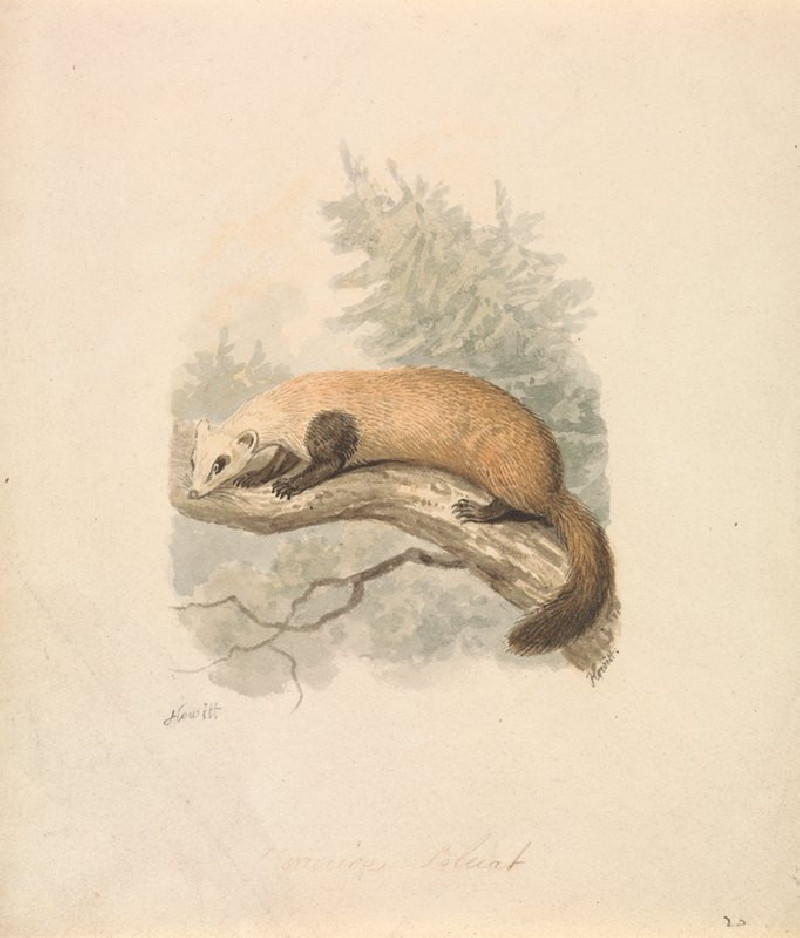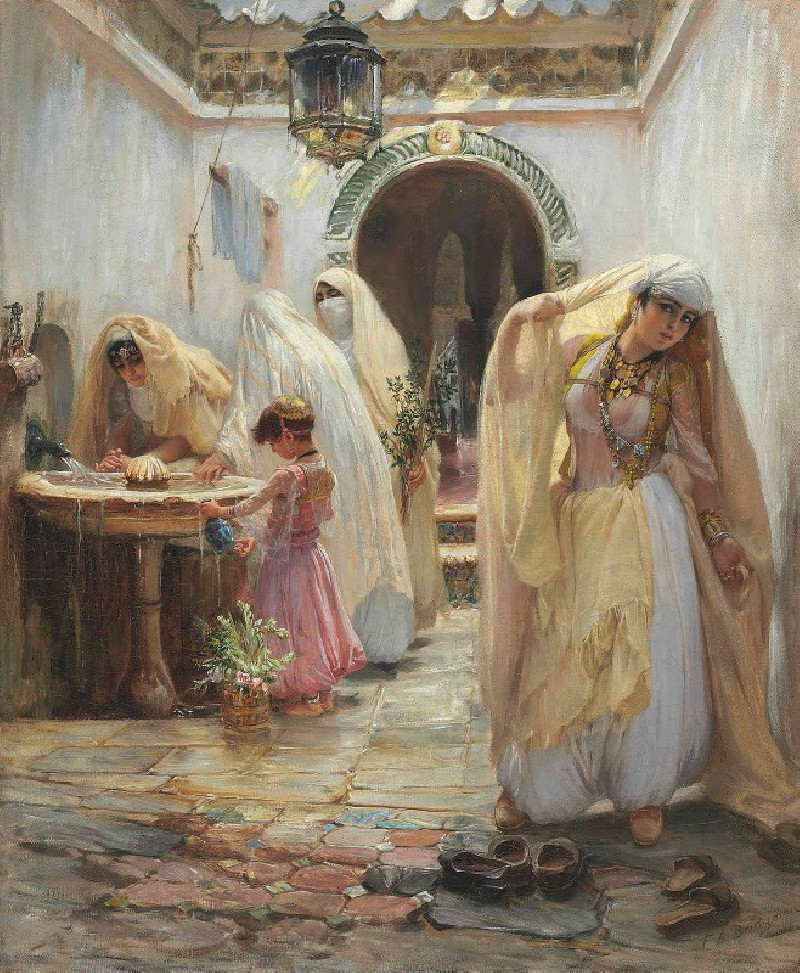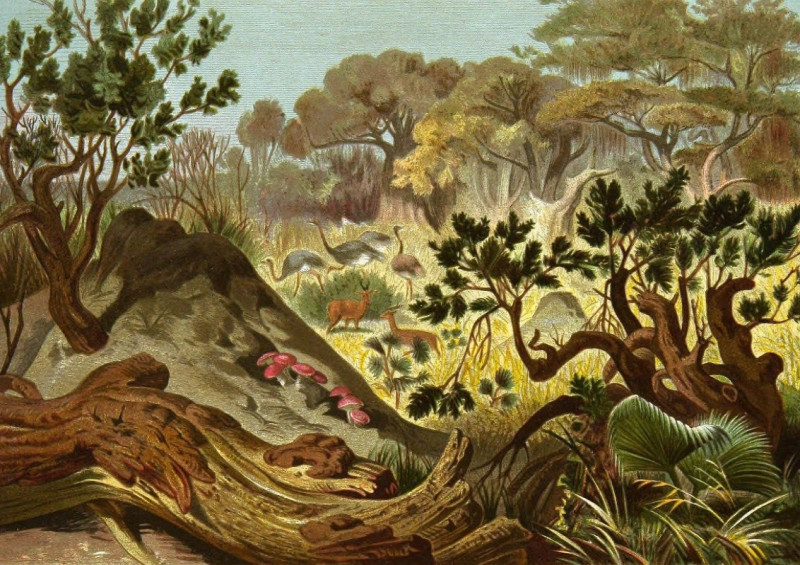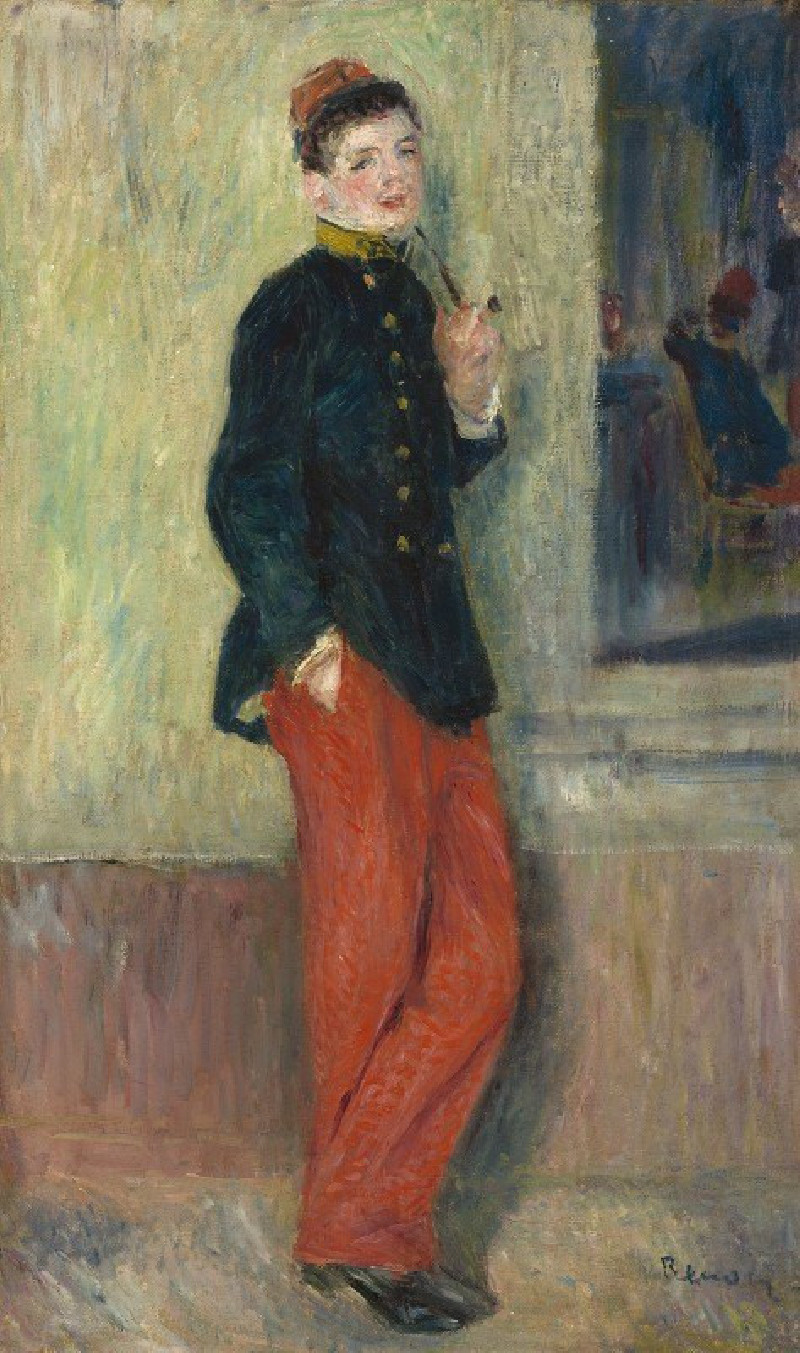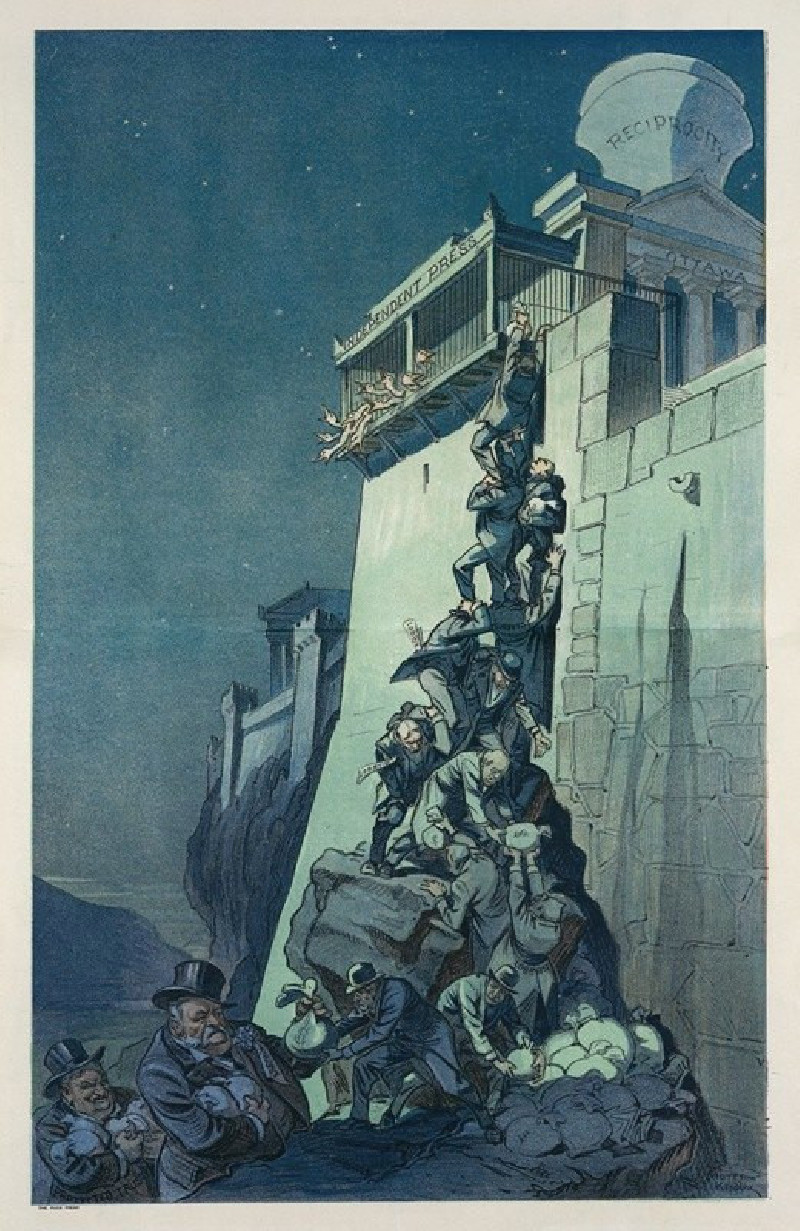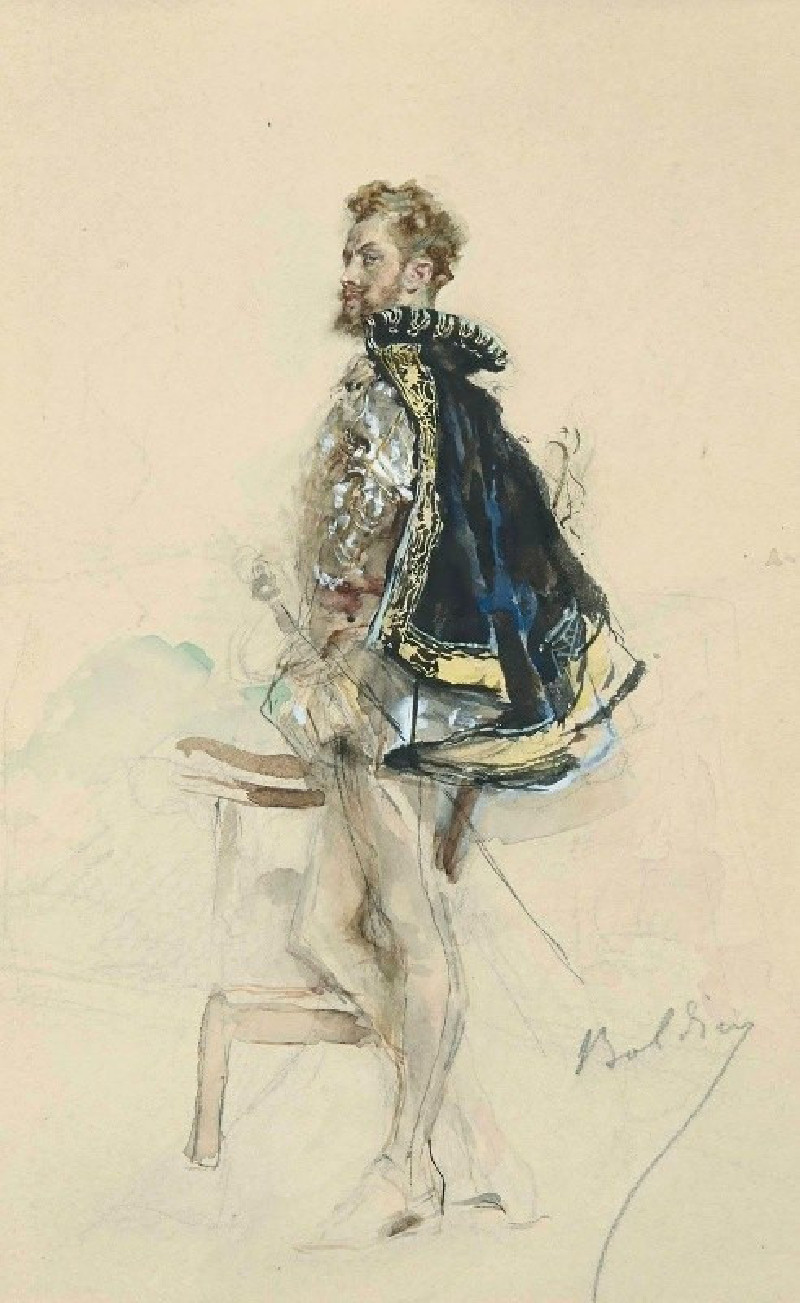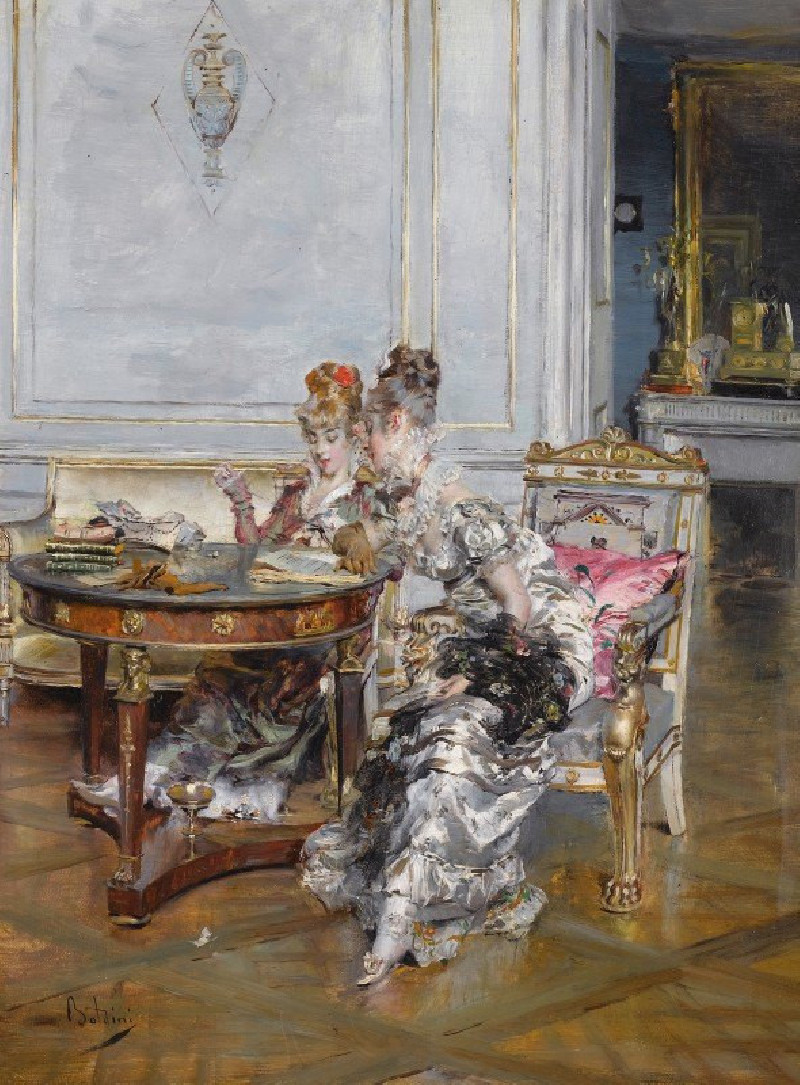Canal Scene by Moonlight (c. 1645 - c. 1650)
Technique: Giclée quality print
Recommended by our customers
More about this artwork
We invite you to delve into the serene and enigmatic beauty of "Canal Scene by Moonlight," painted by Aert van der Neer around the years 1645 to 1650. This evocative artwork is a quintessential example of Van der Neer’s mastery in capturing the tranquil yet mysterious ambiance of nocturnal landscapes, a theme for which he is particularly renowned.The painting presents a panoramic view of a Dutch canal under the luminous glow of a full moon. The moonlight subtly illuminates the scene, casting a gentle reflection across the canal’s surface and highlighting the details of the boats moored along the banks. On the left, a group of figures engage in nighttime fishing, adding a human element to the natural landscape. Their presence, along with the man leading a horse on the shore, brings a quiet liveliness to the otherwise still night.Dominating the background are the silhouettes of a town's architecture, punctuated by the distinct shapes of windmills and church spires. These structures are rendered with such intricacy that they draw the viewer's eye across the canvas, creating a sense of depth and scale. The varied cloud formations, skillfully painted with dynamic and contrasting shades, enhance the dramatic effect of the moonlight and contribute to the overall moody atmosphere of the piece."Canal Scene by Moonlight" is not just a portrayal of a simple night scene; it is an exploration of light, reflection, and everyday life in the 17th century Netherlands. Through his use of color, light, and meticulous detail, Aert van der Neer invites viewers to step into a moment suspended in time, a peaceful evening where nature and humanity coexist in harmony.
Delivery
Returns
Aert van der Neer, or Aernout or Artus (c. 1603 – 9 November 1677), was a landscape painter of the Dutch Golden Age, specializing in small night scenes lit only by moonlight and fires, and snowy winter landscapes, both often looking down a canal or river. He was a contemporary of Aelbert Cuyp and Meindert Hobbema, and like the latter he lived and died in comparative obscurity.


